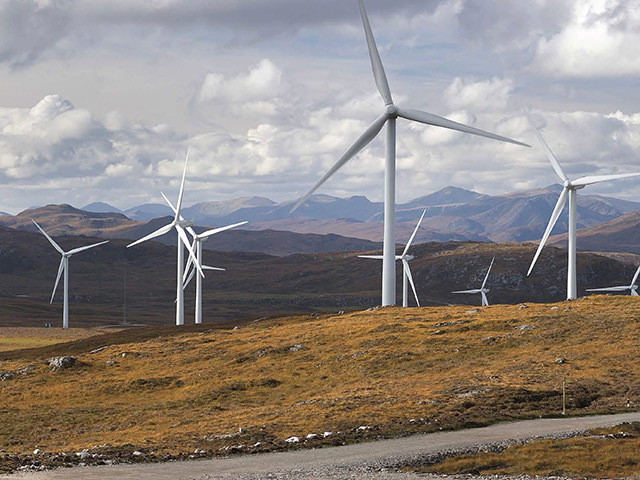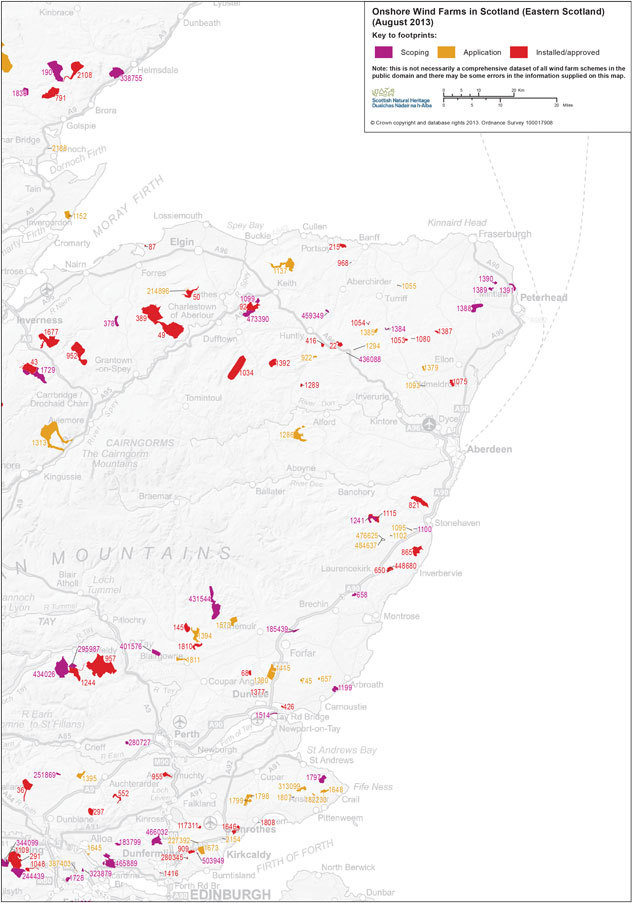
An anti-windfarm group has slated turbine maps created by the Scottish Government’s environmental body branding them “worse than useless”.
Campaign organisation Scotland Against Spin (SAS) said data produced by Scottish Natural Heritage (SNH), showing the numbers of windfarms across Scotland, omits hundreds of the green energy structures.
And the pressure group has pointed to a map produced by local objectors, Concerned About Wind Turbines, which shows a substantially higher number of projects than SNH’s version.
Last night SNH itself admitted its maps were incomplete and difficult to maintain. The maps are supposed to show every turbine development in Scotland.
This is for the benefit of residents who may wish to comment on an application or councillors who will vote on plans.
Scottish Natural Heritage’s versions show that 115 schemes have been approved or built in the north, east and west of the country with an additional 70 applications lodged with planning authorities and 92 sites being assessed for turbine suitability.
However, as revealed in the Press and Journal yesterday, Aberdeenshire Council has approved almost 1,000 with 700 still to be built.
SAS has now accused the environmental body of misleading the public.
“The SNH windfarm maps are worse than useless, indeed they are dangerous because they lull the public and decision-makers into a false sense of security about the extent of turbine development in Scotland,” said Linda Holt, spokeswoman for SAS.
“If we go on the number of turbines we actually see erected, we might think the situation in an area such as Aberdeenshire is not too bad, but of course we do not see the scores of turbines which have consent but which have not gone up yet.
“Cumulative impact is now a significant issue with every single turbine application in Scotland, yet how can it be accurately assessed if the body charged with safeguarding Scotland’s landscape works from such hopeless data?
“It is left up to local groups to compile accurate data for their own corners of the country.”
An SNH spokesman said: “We acknowledge that the map is incomplete. This is due to the huge amount of data it includes and the rapid pace of change of the status of applications within the planning system. The limitations of the map are carefully explained on our website.”


